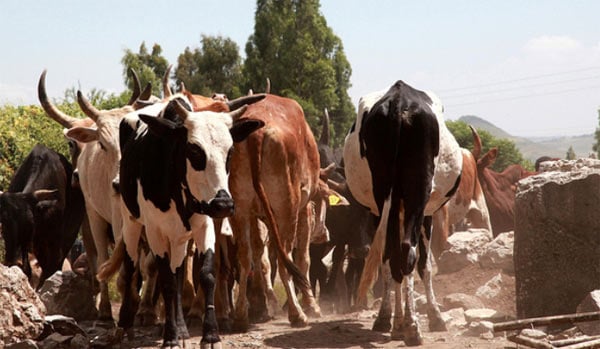Should Humans Drink Cow’s Milk? Part 2 - Digesting Milk in Ethiopia
Yesterday we reported on a new study of our ancient Neolithic ancestors who first began the practice of dairy-related animal husbandry and discussed the implications this may have with regards to the controversial questions – should human’s drink cow’s milk? Now a second study has just been published in The American Journal of Human Genetics tracing the origins of the ability to digest milk in Ethiopia.
A genetic phenomenon, called ‘soft selective sweep’, which allows for the selection of multiple genetic mutations that all lead to a similar outcome - the ability to digest milk - has been characterised for the first time in humans. The study demonstrated that individuals from the Eastern African population have adapted to be able to digest milk, but via different mutations in their genetic material.
We need lactase when we are babies to digest our mother's milk, so in babies large amounts of lactase enzyme are expressed by our genes. When we are older we no longer rely on our mother's milk for essential nutrients, so in most humans manufacture of the lactase enzyme stops through de-activation of the corresponding gene. However, subtle mutations in the regulatory region of the gene in some individuals cause lactase to carry on being expressed into adulthood.
"Our genetic make-up determines our ability to digest milk into adulthood. Just over a third of the global population have inherited genes that allow us to make lactase, the enzyme that digests milk, as adults,” said Professor Dallas Swallow, from the Department of Genetics, Evolution and Environment.
"This study shows that several different genetic changes that allow our bodies to make lactase have emerged independently. Changes to our lifestyle over the past 10,000 years -- including diet, altitude acclimatisation and infectious disease resistance -- will likely have caused many genetic adaptations of this kind,” said Swallow.
Only in the last 5,000 to 10,000 years have humans started drinking the milk of other animals, following advances in our ability to herd animals. In times of plenty, being able to drink the milk of other animals would not have given a particular advantage to those with lactase persistence. However, in situations where food sources became scarce, individuals capable of producing lactase as adults would be able to drink the milk of their animals, increasing their chances of survival.
Ethiopia has been subject to frequent droughts that contribute to famine. Individuals who can digest milk are more likely to increase their chance of survival under these conditions.




















Comments
Genes are a social construct, April. Shame on you for this ist/phobic article! :^)